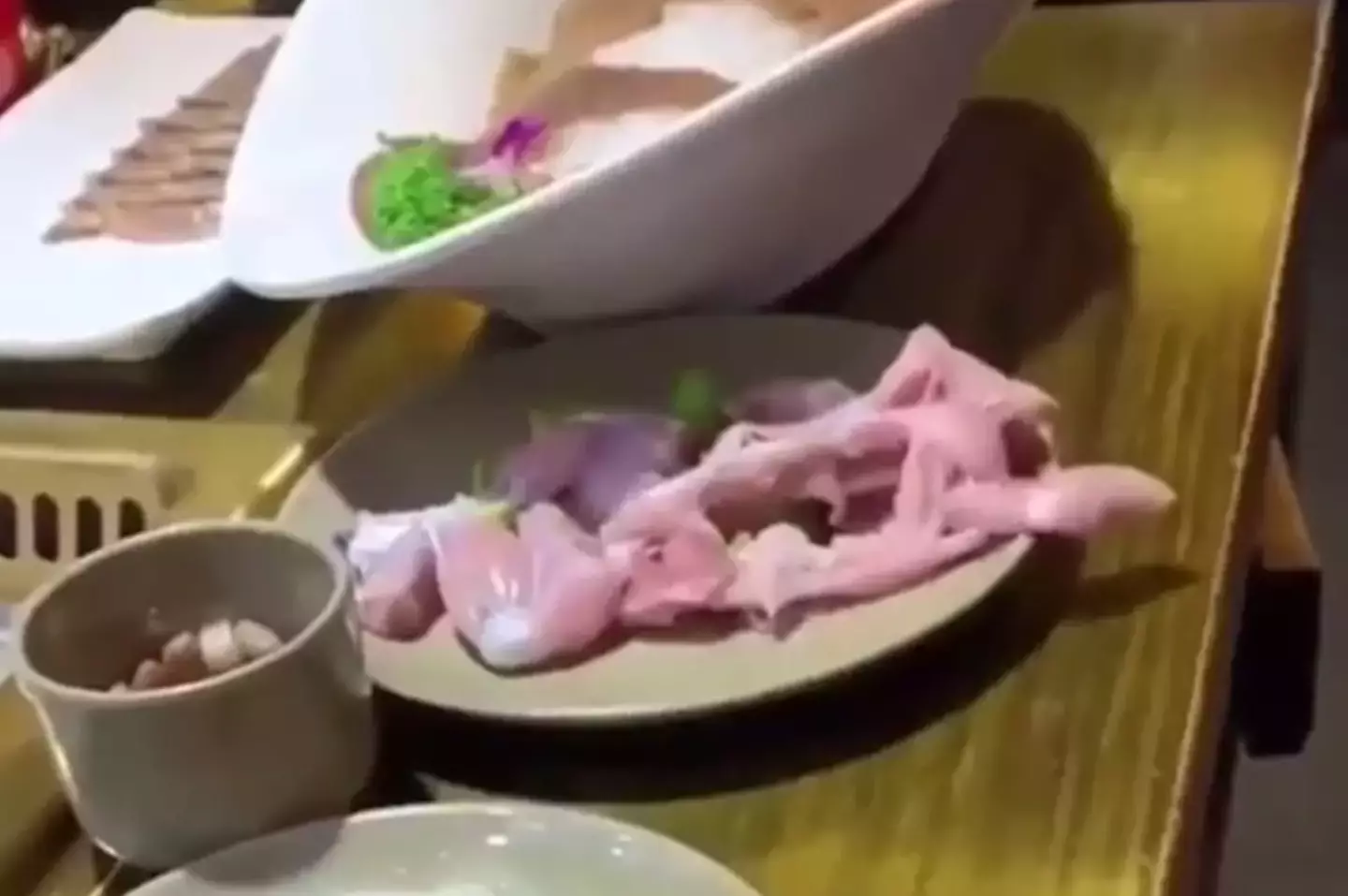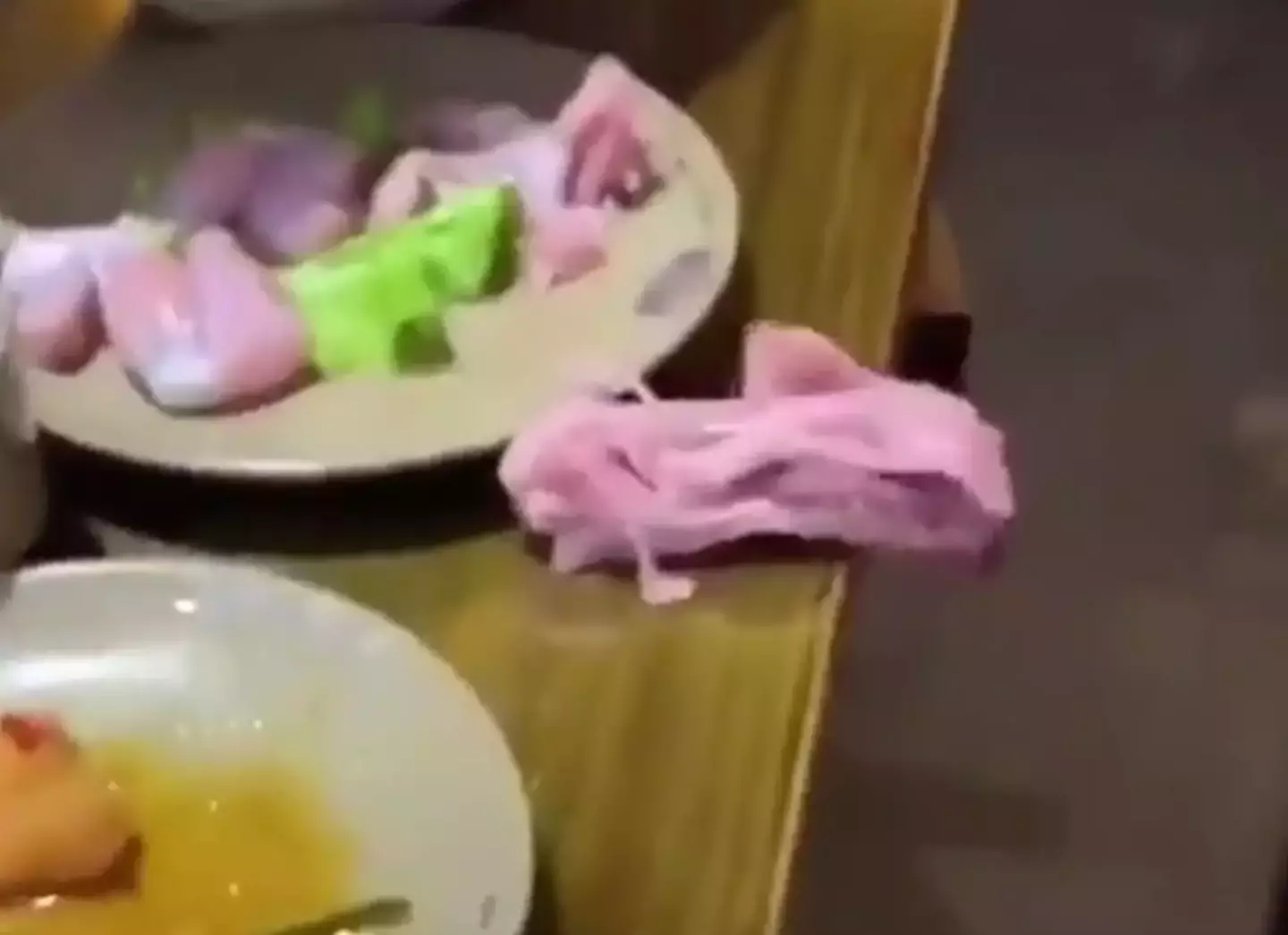Imagine sitting down at a restaurant, excited to dig into your meal, when suddenly, your food starts moving on the plate. It sounds like something straight out of a horror movie, but for one unfortunate diner, it became a reality. A viral video showing what appeared to be “zombie meat” crawling off a customer’s plate shocked the internet, leaving viewers both horrified and fascinated. But don’t worry—there’s a perfectly reasonable explanation for this bizarre phenomenon.
The Viral Video That Spooked the Internet

In the viral clip, we see a piece of raw meat twitching and seemingly coming to life as diners watch in disbelief. As you can imagine, the scene quickly escalated, with people screaming in the background, undoubtedly thinking their food had been possessed. And who could blame them? It’s not every day that your dinner starts moving of its own accord.
The video spread like wildfire on social media, with many making humorous comparisons to a zombie apocalypse. While the sight of “zombie meat” crawling off a plate may be unsettling, we’re here to tell you that there’s no need to start preparing for the end of the world just yet.
Why Was the Meat Moving? The Science Behind the Phenomenon
Although the viral video might suggest something supernatural, the reason behind the moving meat is purely scientific. The unsettling sight is a result of muscle contractions triggered by salt. When raw, fresh meat is exposed to salt, it can cause the muscles to contract, even though the animal is no longer alive.
In fact, what you’re seeing is the remaining nerve endings in the meat reacting to the salt. This reaction causes the muscles to briefly “twitch” and move, giving the appearance that the meat is alive. While it may look terrifying on the plate, it’s a completely natural process that has to do with the meat’s freshness and the interaction with salt.
Fresh Meat: The Key Ingredient for This Eerie Movement
One of the main factors that contribute to the “zombie meat” effect is how fresh the cut is. When meat is incredibly fresh, the nerve endings and muscle fibers remain active for a short time after the animal has been slaughtered. In most cases, this activity dies down before the meat is served. However, if it’s prepared and served quickly, especially with the addition of salt, the muscle contractions can still occur.
This phenomenon can often be seen in certain cultures where freshly cut meats are a delicacy. In particular, Japanese cuisine features a dish called ikizukuri, where live seafood is prepared and served immediately, often resulting in similar movements on the plate.
What Is Ikizukuri? Understanding the Culinary Tradition
The unsettling movement of meat on the plate could likely be attributed to the practice of ikizukuri, a method where live seafood is prepared and served while it’s still twitching. While this might sound alarming to some, it’s a traditional part of Japanese cuisine and is revered for its extreme freshness.
Ikizukuri, which translates to “prepared alive,” is most commonly associated with seafood like fish, squid, and shrimp. The idea is to preserve the freshness of the dish, often with the animal being sliced just moments before serving. The small movements you see in the video could very well be a part of this culinary tradition, where the meat or seafood is so fresh that its muscles are still active.
While the practice is mainly associated with seafood, it’s possible that a similar preparation method was used in this case with meat. The end result? A horror-movie-like experience that’s both intriguing and unnerving for unsuspecting diners.
Why Does Salt Cause the Meat to Twitch?

Salt plays a crucial role in the “zombie meat” effect. When exposed to salt, the sodium causes electrolytes in the muscle tissue to reactivate the nerves, which in turn triggers muscle contractions. Even though the meat is no longer part of a living organism, these contractions create the eerie illusion of movement.
It’s not uncommon for fresh cuts of meat to exhibit this behavior, particularly in culinary traditions where freshness is paramount. In most cases, however, the meat is served after the nerves and muscles have completely relaxed, preventing any twitching from occurring on the plate.
A Freaky Dining Experience: Not for the Faint-Hearted
As fascinating as it may be to understand the science behind this phenomenon, there’s no denying that witnessing your food crawl off your plate isn’t exactly appetizing. For many diners, the sight of twitching meat would be enough to ruin their appetite.
But for the adventurous eater, this could be seen as an exciting experience—proof that the meat is incredibly fresh and prepared with care. In many parts of the world, the movement is seen as a mark of quality. After all, fresher meat is often associated with better flavor and tenderness.
Still, not everyone is eager to dig into a meal that appears to have a life of its own. For those who prefer their food a little less lively, it’s important to remember that this phenomenon is rare and usually reserved for dishes where freshness is the top priority.
Not Paranormal, Just Science

While it’s easy to get caught up in the drama of a viral video, the reality behind this “zombie meat” is far from paranormal. It’s simply a case of fresh meat reacting to salt, causing muscle contractions that briefly make it appear alive.
Despite its eerie appearance, there’s nothing harmful or dangerous about this reaction. In fact, it’s a testament to the quality of the food and its preparation. So, the next time you see a video of meat twitching on a plate, you can rest assured that it’s not an undead creature making a run for it—it’s just a little bit of science at play.
Conclusion: Understanding the ‘Zombie Meat’ Phenomenon
The viral video of “zombie meat” crawling off a plate might have shocked and terrified viewers, but there’s no need to be alarmed. The twitching movement is simply a result of fresh meat reacting to salt, causing muscle contractions that make it appear as if the meat is moving.
For those brave enough to try it, this eerie experience is often a sign of high-quality, fresh food. While the sight of twitching meat may not be for everyone, understanding the science behind it can help alleviate some of the initial shock and perhaps even add a little excitement to your next dining adventure.
In the end, it’s just another reminder that sometimes, the things that seem scary on the surface have a perfectly reasonable explanation. Enjoy your meal—no zombies included!


